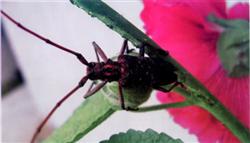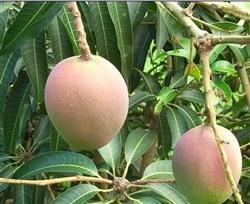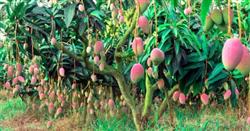Control of mango longicorn beetles

Longicorn beetles belong to Coleoptera and Cerambycidae, which occur in mango producing areas of southern China. By feeding on the branches with larvae, the growth of the damaged plants is weakened, and in serious cases, the damaged branches are easy to be broken by the wind. The insect produces one generation a year, and it overwinters mainly as larvae, and a few pupae or adults can also overwinter in the pores. From March to April of the following year, the adults began to drill out of the pores, and after mating, the females laid eggs in the gaps of the shoots, the leaf axils of the old leaves or the bifurcations of the branches. The larvae hatched from April to May. After hatching, the larvae drilled into the pith of the branches and ate from top to bottom, opening a hole for ventilation and excretion every 30 cm or so. According to the living habits and damage characteristics of longicorn beetles, the measures for comprehensive control of mango longicorn beetles are as follows: first, cut off and burn the damaged branches when clearing the garden in winter. Second, during the emergence of adults, the use of black light to trap and kill adults, or artificial capture when adults mate. Third, use cotton balls dipped with 80% dichlorvos EC, 40% dimethoate EC 5 times 10 times, plug wormholes, and then seal the holes with clay to kill larvae.
- Prev

Measures to overcome the age of mango
To overcome the annual fruit of mango, the first thing is to have an appropriate amount of flowers; the second is to avoid low temperature and rainy weather during flowering; the third is to try to improve the fruit setting rate. The measures are as follows: first, the selection of varieties according to the characteristics of low temperature, overcast and rainy weather in early spring in Guangxi, it is ideal for mango to blossom after early April. Therefore, flowers should be chosen.
- Next

Common chemicals used to control mango diseases and insect pests are culled in one time.
Physical and chemical properties, appearance of dark yellow liquid, density 1.04-1.08 kg / L, storage stability for 2 years, can not be mixed with alkaline pesticides. Highly toxic insecticides, which are toxic to mammals, birds and bees, should abide by the safety regulations for the use of highly toxic pesticides. Action characteristics quick culling, also known as methotrexate, is one.
Related
- Moge, come on! The staff of the peasant association in the producing area of cantaloupe were frightened when the crowd gathered.
- Causes and Solutions of low Fruit setting rate of Apple
- Symptoms and control measures of passion fruit virus disease
- Fruit growing lesson: how do apple orchards keep high yields?
- Can you build orchards in the mountains? What are the pros and cons?
- How to manage the coloring period of Crisson grape?
- This paper introduces the processing technology of two kinds of fig products.
- How much is a month for retired teachers in rural areas by 2020?
- How can strawberry planting increase sugar content? We should pay attention to management in many aspects.
- What are the cultivation techniques on how to improve the yield of golden fruit?

